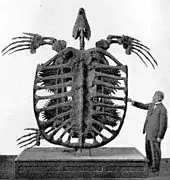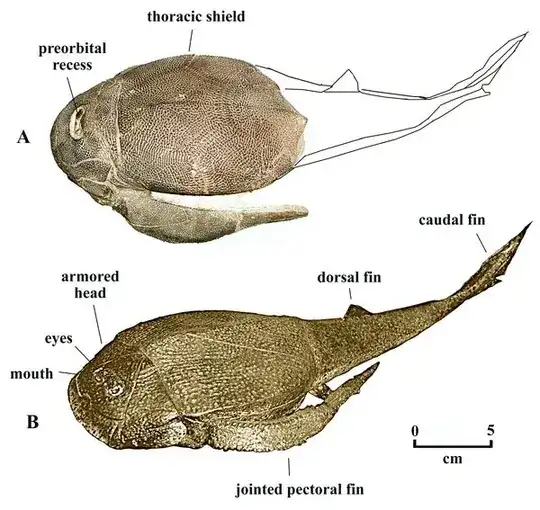A recurring problem in trying to create large creatures is the square-cube law as it applies to upscaling familiar animals, particularly those with exoskeletons: if you double an animal's size, its weight will increase eight times, but its weight-bearing capacity only quadruples and muscular strength only doubles. Arthropod skeletons already account for a greater proportion of the organism's weight than those of vertebrates.
The largest arthropods in history were the Jaekelopterus and Arthropleura, both about 2.5 m long. But neither rose to more than a few tens of centimetres from the ground.
Among the usual proposed partial solutions are lowering a planet's gravity, increasing the oxygen content of the atmosphere (which allowed for much larger insects in our past), and changing the composition of the skeleton itself. Perhaps a structural solution can be added to this list to make land-based carapaced (rather than shelled) megafauna plausible.
Would a blending of exo- and endoskeletal traits, an 'ambiskeleton', work? Here is a simplified diagram of what I'm proposing:
'Ambi-' from Latin meaning both.
The muscle and tissues are encased in a carapace-like shell, with load bearing handled by a bone-like structure along one edge. In this combination the 'carapace' need only contain and protect the contents of the limb or body segment, while the 'bone' bears the weight of the animal. Both portions are continuous, without intervening soft tissue.
With or without the other aforementioned partial solutions, would this allow significantly larger animals with carapaces?



